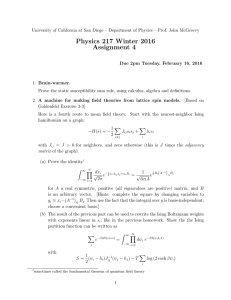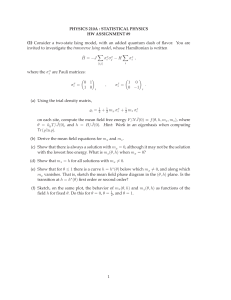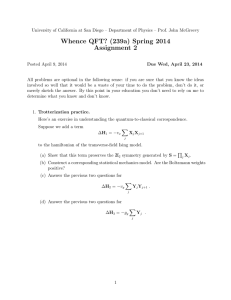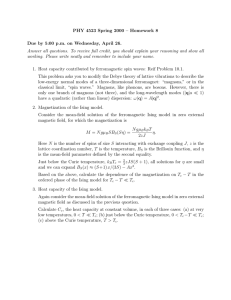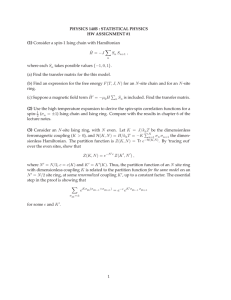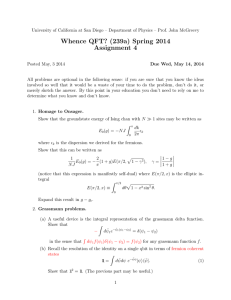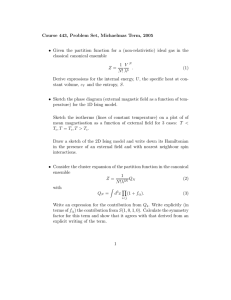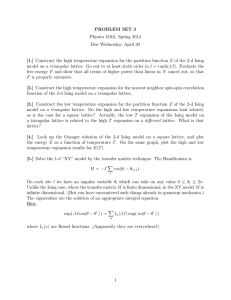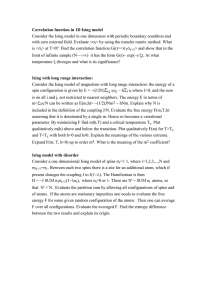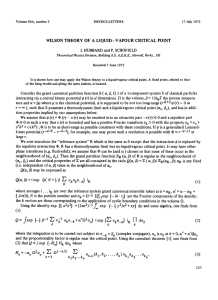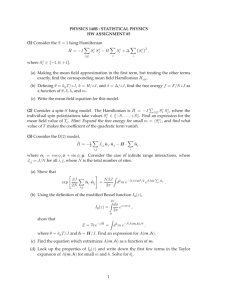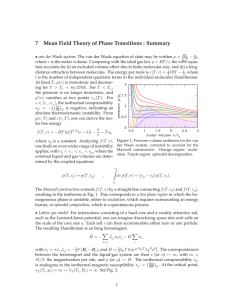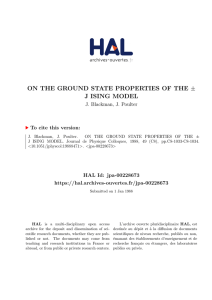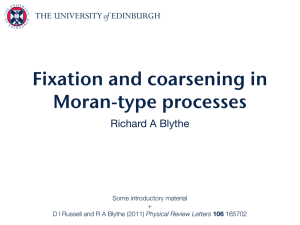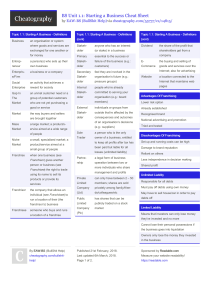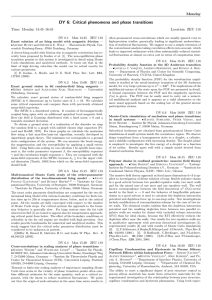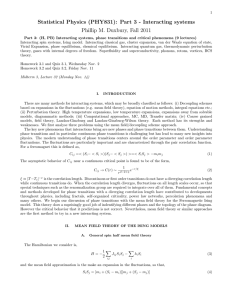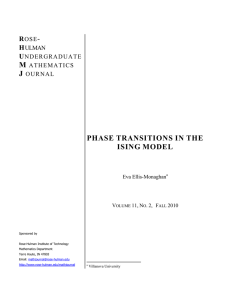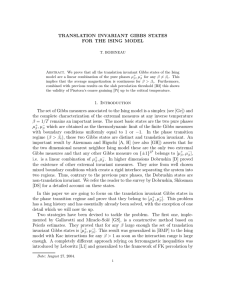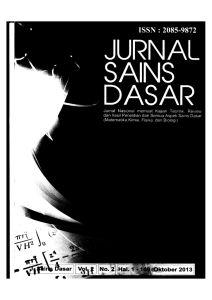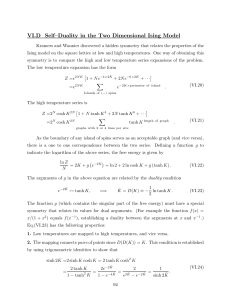Physics 217 Winter 2016 Assignment 3
advertisement
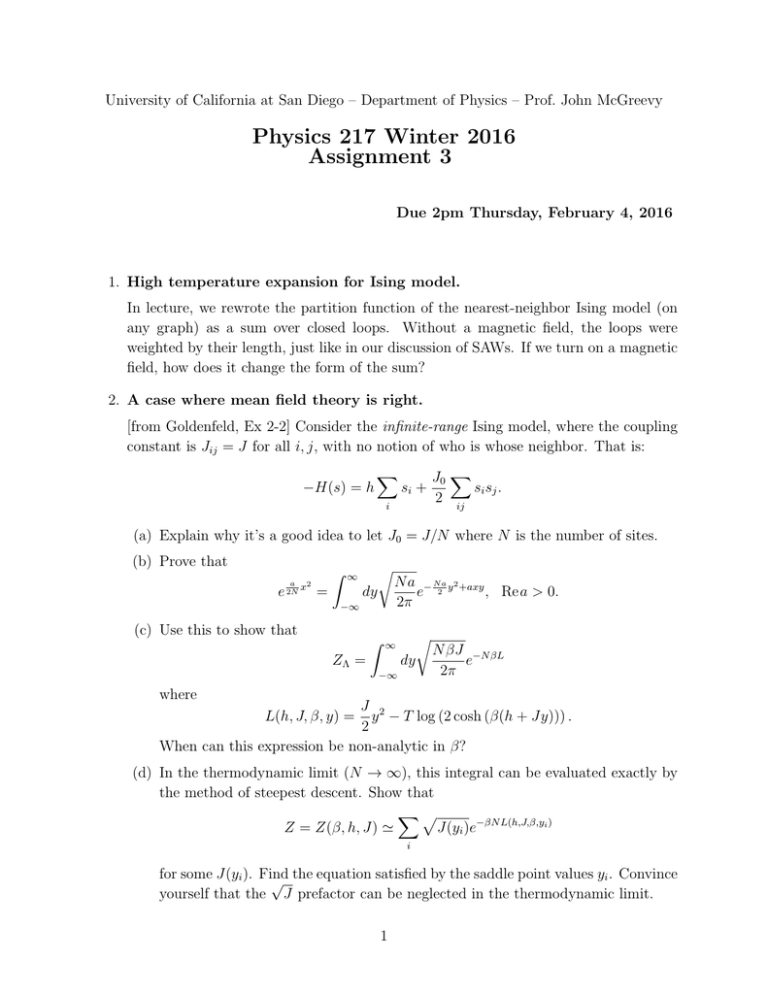
University of California at San Diego – Department of Physics – Prof. John McGreevy Physics 217 Winter 2016 Assignment 3 Due 2pm Thursday, February 4, 2016 1. High temperature expansion for Ising model. In lecture, we rewrote the partition function of the nearest-neighbor Ising model (on any graph) as a sum over closed loops. Without a magnetic field, the loops were weighted by their length, just like in our discussion of SAWs. If we turn on a magnetic field, how does it change the form of the sum? 2. A case where mean field theory is right. [from Goldenfeld, Ex 2-2] Consider the infinite-range Ising model, where the coupling constant is Jij = J for all i, j, with no notion of who is whose neighbor. That is: −H(s) = h X si + i J0 X si sj . 2 ij (a) Explain why it’s a good idea to let J0 = J/N where N is the number of sites. (b) Prove that e a 2N x2 Z r ∞ = dy −∞ N a − N a y2 +axy e 2 , Rea > 0. 2π (c) Use this to show that Z r ∞ ZΛ = dy −∞ N βJ −N βL e 2π where J 2 y − T log (2 cosh (β(h + Jy))) . 2 When can this expression be non-analytic in β? L(h, J, β, y) = (d) In the thermodynamic limit (N → ∞), this integral can be evaluated exactly by the method of steepest descent. Show that Xp Z = Z(β, h, J) ' J(yi )e−βN L(h,J,β,yi ) i for some J(yi ). Find √ the equation satisfied by the saddle point values yi . Convince yourself that the J prefactor can be neglected in the thermodynamic limit. 1 What is the probability of the system being in the state specified by yi ? Use this to conclude that the magnetization is given by 1 ∂h ln Z = y0 N →∞ βN m ≡ lim where y0 is the position of the global minimum of L. (e) Now consider the case h = 0. Show by graphical methods that there is a phase transition and find the transition temperature Tc . What’s the story with all the solutions, for T both below and above Tc ? (f) Calculate the (isothermal) susceptibility χ = ∂h m. For h = 0, show that χ diverges both above and below Tc , and find the leading and c next-to-leading behavior of χ as a function of the reduced temperature t ≡ T −T . Tc 2
